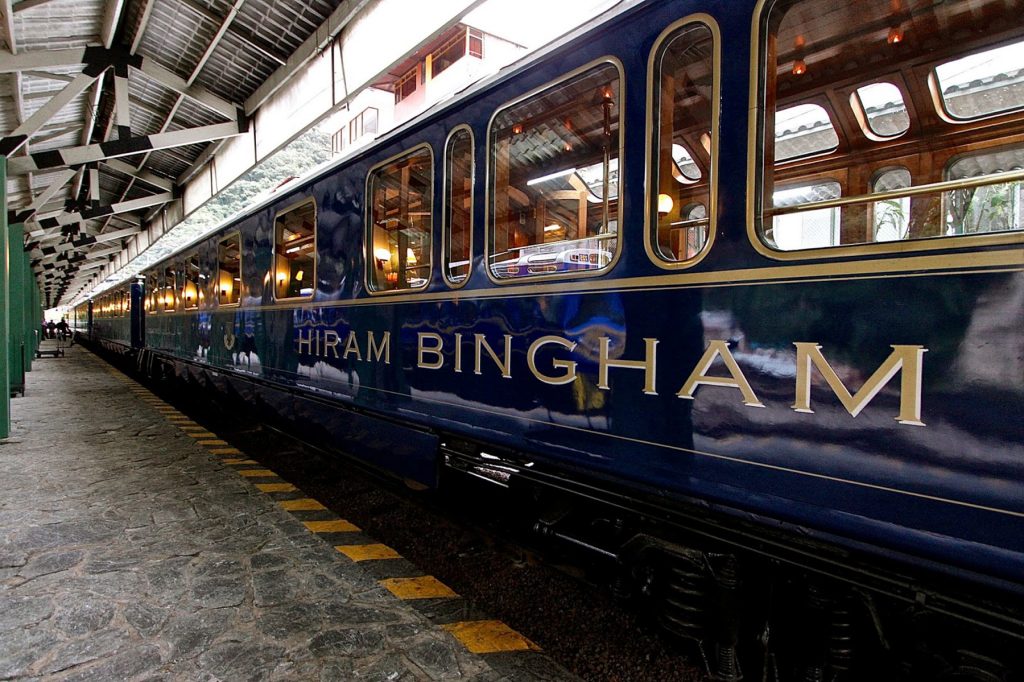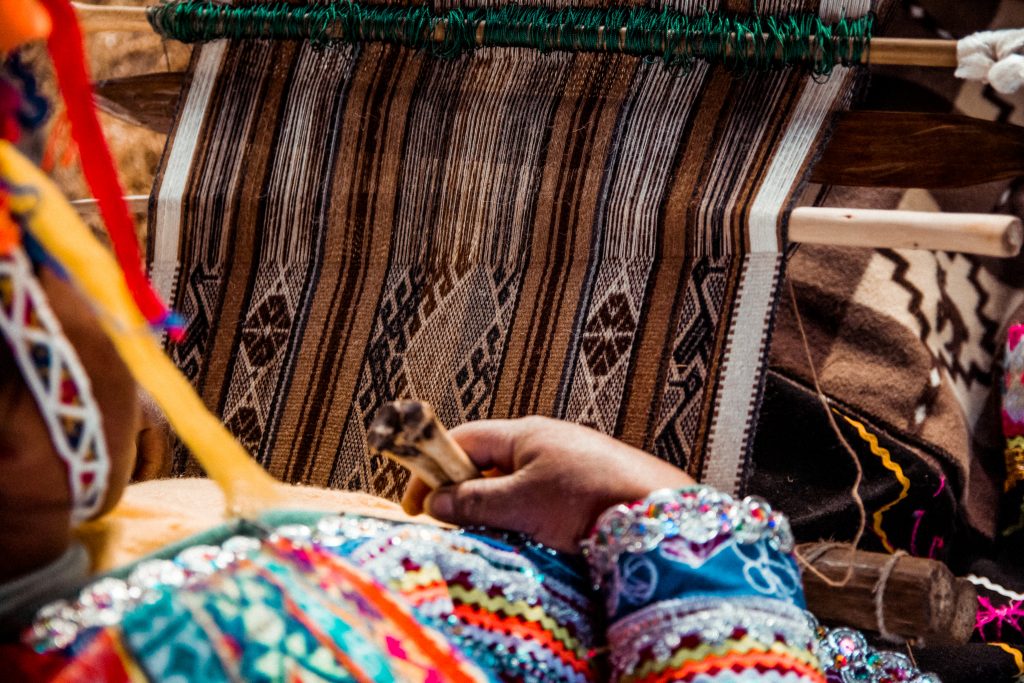Ride the Rails to Machu Picchu
By Cinda Chavich
It remains an enigma – built around 1450 and mysteriously abandoned – and a bucket-list pilgrimage for modern adventurers.
Planning a trip to Peru? We can take you there? Check out our exclusive Social Impact Traveller journeys to Peru
Rising before dawn, I make my way past the shuttered souvenir stalls and bars to a line of buses, queuing up with other travellers hoping for a glimpse of the mysterious city of Machu Picchu at first light.
It’s nearing the summer solstice and, as our bus chugs up the steep switchbacks, I imagine the sun rising over the sheer faces of these “old man” mountains, a searing beam of light illuminating the Temple of the Sun, like it might have at an Inca Sun God ceremony 500 years ago.
But as luck would have it, when we arrive around 7 a.m., just in time for our Kodak moment, a bank of fog rolls through the Sacred Valley and shrouds the views below us in a billowy grey blanket. That doesn’t dampen the wonder of standing here among these spectacular mountaintop terraces and temples though – I’ve reached the pinnacle of an iconic journey.
Hiram Bingham Train

Machu Picchu is a bucket-list destination and, like other sacred shrines around the globe, this UNESCO World Heritage site is often approached on foot. Instead, I book a ticket on the luxurious Belmond Hiram Bingham train that leaves from Cusco. At an elevation of 3,399 metres, Cusco is an adventure in itself, a place to stop and adjust to the high altitude before travelling onward.
Travelling in Hiram Bingham’s namesake train, with its 1920s-style Pullman carriages, makes a rather momentous journey, a flashback to the time when the Yale scholar first discovered the Sacred Valley.
The shiny blue train is waiting to depart from a private train station outside Cusco, local musicians in traditional garb serenade us as we climb on board. The dining car, where we settle in for our day trip, is fitted with plenty of polished brass and burnished mahogany, an homage to the golden age of rail travel.
The trip takes just four hours and begins with an elegant lunch featuring local foods and white linens. Waiters hurry down the aisle delivering flutes of champagne and rosettes of cold smoked trout with quinoa. There’s rare filet mignon and Peruvian potatoes, and cheesecake flavoured with sweet corn.
The altitude drops significantly over the route, and the landscape changes dramatically, from open farmland and dry plateaus to steep gorges, carved by frothing turquoise rivers and clothed in dense jungle. As the train approaches Piscacucho, at kilometre 82 of the 112-kilometre route, I glimpse porters carrying camping gear, following the hikers who are just beginning their four-day hike along the Inca Trail.
When our train pulls into Aguas Calientes, porters are there to carry the luggage to our hotel. I marvel at the market stalls brimming with local woolens and weaving, and the lush forest beyond my window, filled with orchids and hummingbirds. But we’re primed for our final destination high in the surrounding mountains, the ancient architectural marvel of Machu Picchu.
The Lost Empire
Machu Picchu was built around 1450, at the height of the Inca Empire, but there are still questions swirling around the true purpose of this impressive Andean enclave. A sacred spot or a summer palace for the ruling class? The jury is still out.
But historians agree that it is one of the finest examples of Inca engineering, each slab of granite carefully carved to fit against the next like some massive jigsaw puzzle. Perched on this mountaintop, the Urubamba River snaking through the valley below, it’s humbling to sit on the edge of the terraced fields and contemplate the civilization that created it all.
Though some call Machu Picchu “the lost city”, local farmers knew the spot well when Bingham followed them up these steep slopes and first saw the ruins. The city was overgrown but largely intact, and somehow missed by the Spanish conquistadors when they battled the Inca and laid claim to the territory in 1572.
That’s why it remains one of the most important pre-Columbian archeological sites in the world. It’s hard to take in all of the guide’s information as we hike through the steep, 12-acre site – the underground foundations and complex drainage system, the orientation to the sun, the powerful sacred stone at the highest point – but it is clear that this is evidence of a powerful and sophisticated civilization.
When we board the Hiram Bingham train for our return trip that evening, dinner is another elegant affair of kiwicha caviar and grilled trout with wild tree tomatoes. We disembark when the train stops in Ollantaytambo, with plans to visit other important remnants of the Inca Empire from the spectacular salt pans at Maras to the concentric terraces of Moray. Paragraph

In the market in Chinchero, I peer into the aging faces of the Andean women selling potatoes and quinoa, laughing and drinking fermented chicha morada, babies wrapped in bright shawls on their backs. In their wide skirts and distinctive fedoras, these Quechua-speaking people are the living descendants of the Incas.
Theirs is a rich culture — with a magnificent and noble past.